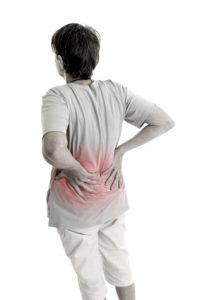In 2022 low back pain (LBP) was the leading cause of disability across the world. In 2020, approximately 1 in 13 people (about 619 million people) had low back pain, which is a 60% increase compared to 1990. Furthermore cases of LBP are expected to rise to an estimated 843 million by 2050. The greatest increase in cases is anticipated to be in Africa and Asia, where populations are getting larger and people are living longer.
‘Chronic’ primary LBP means pain that lasts for more than 3 months that is not due to an underlying disease or other condition eg. fractures. This accounts for about 90% of patients who see their GP’s about LBP. Chronic LBP has significant impacts both personally and financially globally and for these reasons, the WHO has issued guidelines on chronic primary LBP.

With the guidelines, WHO recommends non-surgical interventions to help people experiencing chronic primary LBP. These interventions include:
- education programs that support knowledge and self-care strategies;
- exercise programs;
- some physical therapies, such as spinal manipulative therapy and massage;
- psychological therapies, such as cognitive behavioural therapy; and
- medicines, such as non-steroidal anti-inflammatory medicines.
The guidelines also outline 14 interventions that are not recommended for most people in most cases. These interventions should not be routinely offered because the available evidence indicates that potential harms likely outweigh the benefits. The WHO advises against interventions such as:
- lumbar braces, belts and/or supports;
- some physical therapies, such as traction (i.e. pulling on part of the body);
- and some medicines, such as opiate pain killers, which can be associated with overdose and dependence
The following a link to the summary page on the WHO guidelines for non-surgical management of chronic primary low back pain in adults in primary and community care settings


